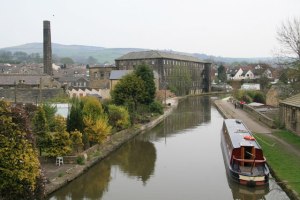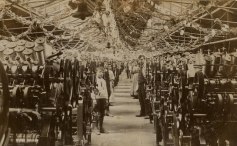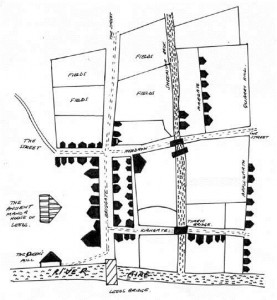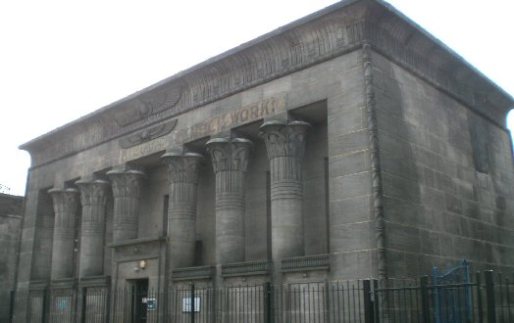Tags
Armley Mills Industrial Museum, Benjamin Gott, Bradford, history, Industrial Revolution, Leeds, manufacturing, Temple Works, West Yorkshire, wool industry, Yorkshire
 I’m a fairly new resident of Yorkshire. I knew already that it was the UK’s largest county, renowned for it’s wild countryside and of course the Brontes, but it was only since beginning crochet and purchasing wool from my local shop that I realised how significant the region was in wool production.
I’m a fairly new resident of Yorkshire. I knew already that it was the UK’s largest county, renowned for it’s wild countryside and of course the Brontes, but it was only since beginning crochet and purchasing wool from my local shop that I realised how significant the region was in wool production.
So as a nod to my newly adopted home of Leeds, West Yorkshire, I’m going to explore it’s woollen heritage in this post.
Reading through various resources it seems as though Leeds, West Yorkshire, has been around since the beginning of time. Present day Leeds is one of the largest cities in the UK with an estimated population of around 750,000, and known as the cultural, financial and commercial capital of Yorkshire. It was first mentioned in the Domesday Book of 1086 with a population of just 200. Clearly it has gone through much growth and change over the centuries to be the city that it is today.
It appears that various events and conditions in the history of Leeds and Yorkshire as a whole, propelled the region into becoming a significant trader, particularly in wool. In 1207 Maurice Paynall, Lord of the Manor, granted Leeds inhabitants with a Charter to free them from his land, learn useful trades and pay him rent instead.
So gradually the town expanded and by the 1600’s the wool industry had been established. Such was the reputed quality of the product produced in Leeds, that King Charles I granted the town with a charter enabling it to form a corporation to protect its product.
It’s said that the abundant supply of water in the Yorkshire region was advantageous in the production of woollen textile used for washing and supplying water power, and later the arrival of railways would contribute to the expansion of the wool industry. In the late 1700’s John Marshall spearheaded this movement by building his mill in Holbeck, Leeds and using the water of the Leeds and Liverpool Canal and the River Aire to power spindles, employing 2000 people. His success enabled him to build another mill, the Temple Works based on the Egyptian Temple of Edfu, he encouraged education amongst his child workers, prohibited the use of corporal punishment. He was one of the founders of Leeds Mechanics’ Institute and the Leeds Philosophical and Literary Society and campaigned to establish Leeds University. Clearly John Marshall was a revolutionary man in many ways and did much to benefit the people of Yorkshire.
By the 19th century the Industrial Revolution had swept the country and several Yorkshire businessmen were revolutionising wool making locally. In 1805 Benjamin Gott built the largest wool factory in the world in Leeds and experimented with steam power and power looms. His second mill in Armley, Leeds now stands as a Armley Mills Industrial Museum.
John Foster, another prominent figure in the wool industry is said to have owned the largest worsted mills between Halifax and Bradford, consolidating the region’s reputation for producing quality worsted wool (made of longer and finer fibres).
 Yorkshire wools were exported worldwide and workers from Yorkshire travelled to work America to assist in wool manufacturing over there. Unfortunately wool manufacturing industry declined in the 20th century for various factors such as war, declined economy and global competition. And although Yorkshire’s woollen industry may no longer be in it’s heyday, remnants still remain.
Yorkshire wools were exported worldwide and workers from Yorkshire travelled to work America to assist in wool manufacturing over there. Unfortunately wool manufacturing industry declined in the 20th century for various factors such as war, declined economy and global competition. And although Yorkshire’s woollen industry may no longer be in it’s heyday, remnants still remain.
I know that next time I go shopping for wool locally, I will look at it quite differently. I think it’s nice knowing where it came from and links to it’s great heritage. For anyone interested, I came across this great guide to British yarns: http://apileofsheep.wordpress.com/a-guide-to-great-british-yarns/




Hi there, welcome to Leeds and our wonderful wool shops – have you discovered Baa Ram Ewe in Headingley yet? I live around the corner from it and it seems like a bit of a mecca for crafters… *grin*
Hi Alex, thank you for the welcome!
I do know of Baa Ram Ewe, it’s on my places to go. I mostly get my wool from Kirkgate market or online, but I will trek out for a bigger wool range 😉
It is really great to read about our heritage. Thank you for this it is so easy to forget that we were once a main producer!
What a great post! I am from Leeds and I didn’t really know any of this, so it’s certainly been educational 🙂